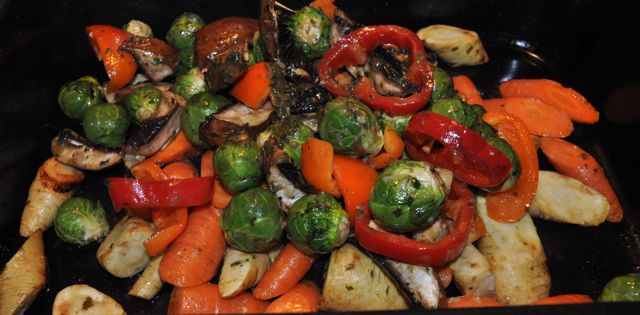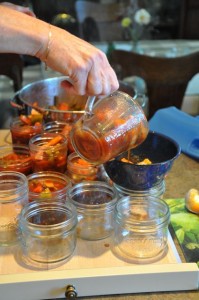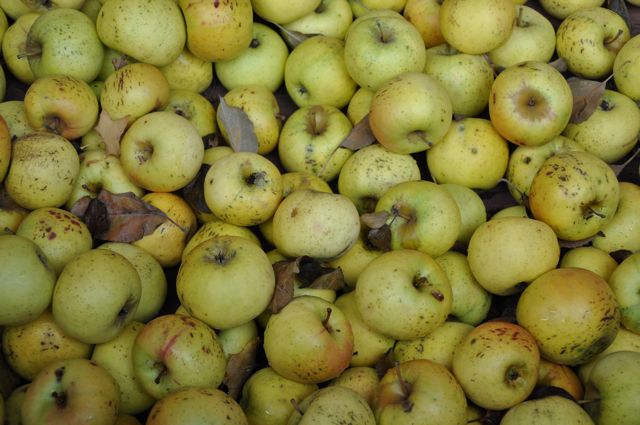The “Reduce Food Waste” challenge
Comments Off on The “Reduce Food Waste” challengeLast week, I participated in the 2nd Annual Headwaters Food Summit, presented by the Headwaters Food and Farming Alliance. It was a fabulous day of networking, knowledge-building and sharing. And I was able to purchase Ontario-grown garlic at the Local Food Trade Fair that wrapped up the day.
Dr. Ralph Martin, Loblaw Research Chair in Sustainable Food Production at the University of Guelph gave the keynote address – I took notes. He quoted a stat that the average family in Canada (which is 2.1 persons) spends an average of $140 per week on groceries … and throws away about $28 worth. That’s a lot of waste. He continued further by reminding us that there will be 9 – 10 Billion people on the planet in 2050, which means we have to produce a lot more food, 70% more and up to 100% more to account for the waste!
Dr. Martin offered several solutions to consider – one of which was reducing food waste. And that inspired me to dedicate this blog to engage my readers in a Reduce Food Waste challenge. I’ll start by offering up some ideas that I garnered at the summit and by asking family and friends for their tips and tricks.
1) The first challenge – a week without grocery shopping
• Take an inventory of what you have in your pantry, your refrigerator and your freezer.
• Plan out the week’s meals based on what you have found.
• Do not go grocery shopping (exemptions fresh fruit and vegetables as I still want you to get your 8 veggies per day : )
• Consider giving the $ you saved this week to a soup kitchen or a food bank (also give away any food that you will not use that is still well within its best before date. PLEASE check this so the volunteers at the food bank don’t have to do it.
2) Second challenge – make a plan
• The next time you go grocery shopping, start by making a meal plan and then make a list.
• Stick to the list. How many of us pick up the great deal on 5 avocados (I like to call this Costco-ization) only to end up composting 4 of them
3) Third challenge – re-purposing overripe fruit
• Make apple sauce or pear crisp if the fruit are soft and no one wants to take them on their lunch anymore.
• Throw over-ripe bananas in the freezer, skin-on. Use for banana bread or in smoothies.
• Caveat – Do not eat anything that is moldy. If the raspberries you bought on Friday are moldy on Monday, compost them. And make note to eat any future raspberry purchase within a day or two. Don’t leave them languishing!
4) Fourth challenge – follow Grandma’s “waste not, want not” mantra
• Both of my grandmothers lived through 2 World Wars … and they did not waste anything. I don’t peel any of my vegetables, but if you do – save those potato peelings. Also save the stalks from broccoli and cauliflower, the ends off the Portobello mushrooms, tops from the carrots and onions, and keep them in a bag in your freezer. Once you’ve achieved a critical mass i.e. the bag is taking up too much space, put them in a pot and cover with water. Add a bouquet garni (thyme, oregano, rosemary tied in a bundle) simmer for a couple of hours and then strain to make a tasty homemade vegetable stock. Those who eat meat can make great stock from bones as well.

5) Fifth challenge – ask for a “Doggie Bag”
• Restaurants throw away a phenomenal amount of food. Part of the problem is the huge serving sizes that patrons cannot make their way through. So, next time you are out, ask for a Doggie Bag. It will make tomorrow’s lunch very easy!
• Speaking of leftovers – if you don’t want to eat the same thing several days in a row, get creative. For example – last night’s roasted veggies make great wraps or a tasty topping on a green salad.
6) Sixth challenge – Freezing or canning
• Let’s say you’ve been to the farmers’ market and have a lot of tomatoes – make a sauce and freeze it in the size that will work for one mealtime.
• Make a soup or stew and freeze some of it, so you are not eating it every day for a week. You’ll be very happy to open the freezer for a quick meal sometime down the road. But remember to keep tabs on what is in your freezer.
• Canning local fruits and vegetables is a great way to preserve the wonderful flavours to enjoy all year round.

7) Seventh challenge – Buy organic (and always local when possible)
• I buy the fruits and vegetables on EWG’s “Dirty Dozen” list and I can tell you when I’m paying $5.99/ kg for peppers, I don’t want them to end up in the compost – so I’m more intentional about eating them versus a non-organic 3 pack that I get for $2
8) Eighth challenge – Find more ideas online
This is a really great tip from Naturemoms: http://naturemoms.com/blog/2010/02/08/8-ways-to-cut-down-on-food-waste/
• List the leftovers. This is an incredibly simple and incredibly useful way to remind you to eat the leftovers! Put a magnetic pad on your refrigerator. When you put leftovers in the fridge, note the item and date. Aka “Sweet and Sour Soup 2-8-13″. The list will look right at you when you go to browse for your next meal or snack, even if the leftovers end up out of sight in the back of the fridge. It is also useful for spouses who are looking for something to take to lunch and perhaps didn’t know there were leftovers.
I would love to hear from you. Let me know if you take the Reduce Food Waste challenge OR share your waste reduction ideas.
